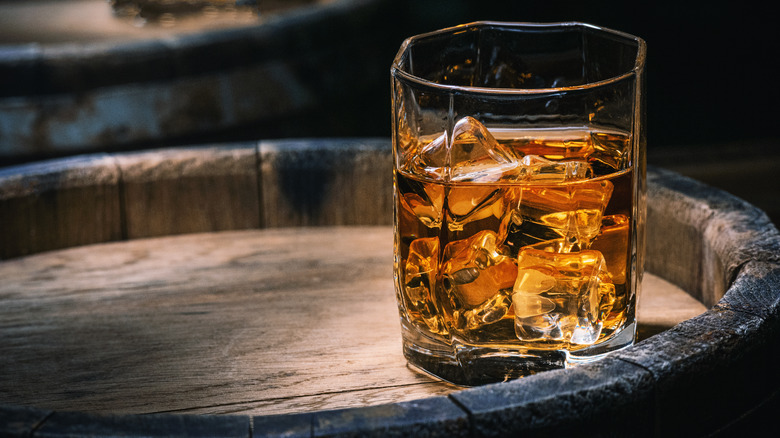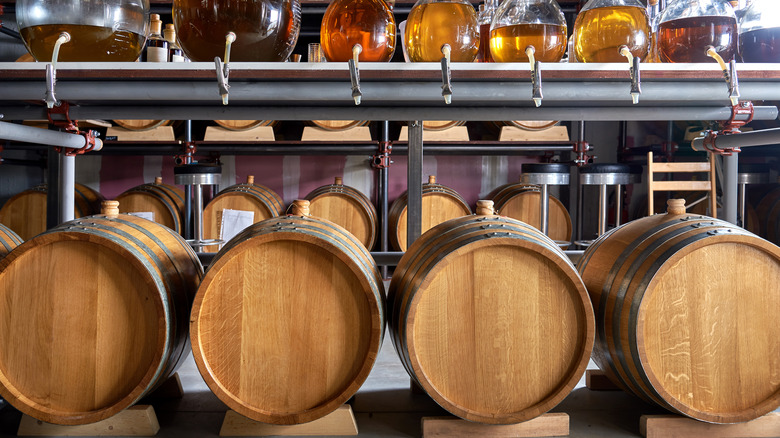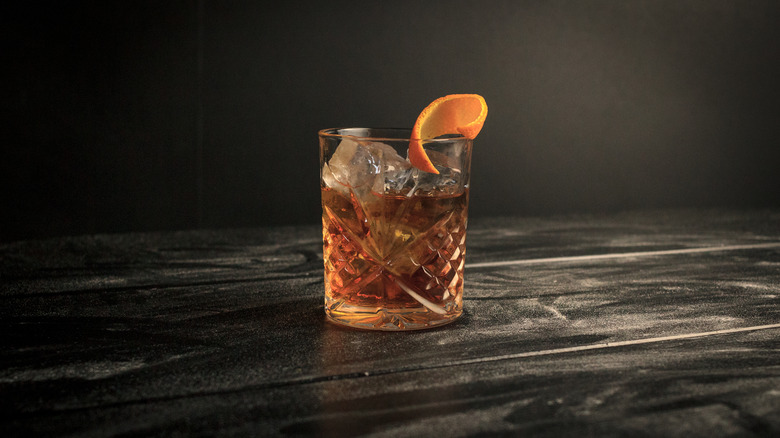The Difference Between Whisky & Whiskey
"Whisky" versus "whiskey" is not just a spelling preference like "donut" and "doughnut" or "T-shirt" and "tee shirt." There's a big difference between the two variations of the word. The differentiation is taken so seriously, in fact, that The New York Times officially changed its stance on using a universal spelling after a slew of complaints from Scotch lovers. The difference between the two comes down to where in the world the spirit is made.
Originally, whisky came from Scotland, and whiskey came from Ireland. Those donning the name "whisky" originate from Scotland, Canada, and Japan. Japan adopted "whisky" thanks to the pioneers of the Scotch movement within the country having studied Scotch whisky. The spirit spelled "whiskey" hails from either Ireland or the United States, most likely due to Irish immigrants. One exception to this is Maker's Mark in the United States which chose to drop the "e" and stick to its Scottish roots.
Both spellings of the libation are of the same category of distilled spirits. They are made from a fermented grain mash that is then aged in a wooden vessel typically made of oak. But from taste to variations in production to the grains used, the differences between the two extend far beyond the letter "e."
How whisky and whiskey differ in taste
The taste disparities between the two aren't exactly clear-cut based on the spelling. Not all whiskies taste the same and neither do all whiskeys. The variances are more a matter of the country the spirit is made in and not the spelling. However, when most people think of whisky, they think of Scotch. And when most people think of whiskey, they think of bourbon. These two have quite marked distinctions in flavor.
In order to earn a Scotch whisky label, it must be made in Scotland, from malted barley, aged for a minimum of three years, and be at least 40% alcohol by volume. Scotch whisky has a smoky and strong flavor and is often described as woody and peaty. Tobacco, leather, and bread are also common adjectives associated with Scotch. Much like with wine, Scotch produced in different regions of Scotland has a different flavor and mouthfeel.
Bourbon must be made from at least 51% corn, aged for a minimum of two years, and must be at least 40% alcohol by volume and no more than 62.5%. The rest is made up of other grains including barley, rye, and wheat. Bourbon, and a few American whiskeys, use new charred oak barrels for their aging process. This results in a sweeter, less peaty taste than their European counterparts. Bourbon is often described as oaky, with hints of vanilla or caramel.
Types of whisky
Canadian whisky is made from corn, though rye is also often added. It is aged in old and new barrels made of different types of wood, which softens the flavors and results in a light and smooth spirit. In Canada, the grains are mashed separately and then combined after they're distilled. In the United States, they are all mashed together first. It is aged for a minimum of three years and must be at least 40% alcohol by volume.
Japanese whisky is made very similarly to Scotch whisky and the country's distilleries import most of their ingredients from Scotland. Japanese whiskies must be made in Japan, aged at least three years, be made of malted grain, and only use Japanese water. Some distillers use barrels also used to age bourbon, while others use wood from the mizunara tree, which is only found in Japan and imparts a unique flavor. Japanese whiskies tend to have less of a smoky and peaty flavor than Scotch and are lighter and more delicate. The flavor notes vary depending on distillery, but notes of everything from vanilla, malt, and spice, to citrus, herbs, and honey are common.
Types of whiskey
There are four main types of whiskey: bourbon, Irish, Tennessee, and rye.
Irish whiskey is made from malted cereal grains including barley, rye, and wheat. All Irish whiskey must be made on the island and aged for at least three years. Most Irish whiskey is aged in charred oak barrels that have also been used for bourbon, lending some of that sweetness. It differs from Scotch whisky in that it is distilled three times giving it a smoother finish than Scotch, which is only distilled twice. Irish whiskey is further broken down into single malt (peated and unpeated), single grain, single pot still, and blended.
Tennessee whiskey must be made in the state and be at least 51% corn with the remainder usually made of barley, wheat, and rye. It must be at least 80% alcohol by volume, though most are much higher than that. It is generally lighter and has more of a syrupy sweetness than bourbon as it undergoes a charcoal-mellowing process, but maintains the same notes of vanilla and caramel. The charcoal process imparts an added hint of burnt wood to the flavor.
Rye whiskey is processed in much the same way as bourbon, but made with at least 51% rye grain instead of corn. It has a peppery bite to it and can be described as grassy. It must be at least 40% alcohol by volume to be bottled and is commonly used in the Manhattan and Old Fashioned cocktails.



